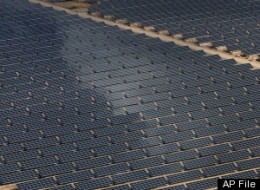Verizon and
UPS are both expanding their
hybrid fleets in the U.S. While Verizon plans to add more than 260
hybrid vehicles in New Jersey, UPS is rolling out 160 additional hybrids in New York, New Jersey and California. Freightliner also launches its next-generation of all-electric walk-in delivery vans.
Verizon’s new
hybrid vehicles are part of the 1,600
alternative-energy vehicles that the company plans to add to its fleet across the country this year. These will include Toyota hybrid sedans, Chevrolet hybrid pickup trucks and unique “mild hybrid” aerial fiber splicing trucks.
The Chevrolet
hybrid pickups will be used by FiOS and traditional telephone customer-service technicians and are expected to reduce CO2 emissions by 43 percent compared to the vans they will replace.
The aerial fiber splicing trucks are equipped with an aerial lift device, or “bucket,” for aerial line work and an
environmentally controlled body compartment for splicing fiber-optic cable. The lift, splicing equipment and climate controls are powered by lithium-ion batteries, eliminating the need for a gasoline- or diesel-powered generator. This will save approximately one gallon of petroleum fuel consumption per hour of operation and reduce six to 12 metric tons of CO2 emissions annually per aerial truck, depending on use.
Verizon says it used this “mild hybrid” solution because conventional
hybrid technology offers little benefit for equipment such as aerial splicer trucks with typically low-mileage drive cycles.
In July, Verizon added 576 Chevrolet Silverado Two-Mode
Hybrid full-size pickups in an effort to reduce the carbon footprint of its fleet vehicles.
Verizon employees also have also been reducing CO2 emissions by cutting engine idling times. Since 2008, Verizon employees have conserved more than 2.7 million gallons of fuel.
UPS also is beefing up its
hybrid fleet. The package delivery company is adding 130 hybrid electric vehicles to its growing fleet of alternative-fuel vehicles (AFVs), which will be deployed next year, with 30 slated for New York and New Jersey and 100 to California.
UPS estimates these vehicles will save 66,085 gallons of fuel and 671 metric tonnes of CO2 annually, representing a 35 percent improvement in fuel economy.
UPS operates one of the largest private fleets of
alternative-fuel vehicles in the transportation industry with 2,022 vehicles in total. The company has invested more than $25 million to develop its AFV fleet, which also includes other fuels such as compressed natural gas, liquefied natural gas, propane and all-electric. The fleet is deployed in eight countries in addition to the U.S., and since 2000, has traveled 185 million miles.
In June, UPS announced it was putting 200 new hybrid electric trucks into service across eight U.S. cities in an effort to reduce fuel consumption.
Earlier in the year, UPS deployed 245 new delivery trucks fueled with compressed natural gas (CNG) to cities in Colorado and California, and 200 next-generation hybrid electric delivery trucks in Austin, Houston, Philadelphia, Chicago, Washington D.C., New York City, Minneapolis and Louisville.
UPS says it was the first package delivery company to introduce a hybrid electric vehicle into daily operation with a research program in early 1998. Currently, there are 250 UPS HEV delivery vehicles operating in the United States.
The new vehicles’ hybrid electric power system uses a conventional diesel engine combined with a battery pack, which saves fuel and reduces emissions. The energy generated from braking is captured and returned to the battery as electricity. The combination of clean diesel power and electric power, supplemented by regenerative braking, allows significant improvements in fuel savings and emissions reductions, according to UPS.
The HEV fleet features two different size vehicles from Freightliner Custom Chassis Corporation (FCCC) and a hybrid drive system from Eaton Corporation. The external truck bodies are identical to UPS’s other signature brown trucks, with the exception of additional labeling that identifies them as hybrid electrics.
FCCC, together with Morgan Olson, recently launched the next-generation all-electric walk-in van that features new exterior and interior body styling. The companies say the MT-EV WIV features a lightweight, aerodynamic design for improved efficiency.
Introduced at the Hybrid Truck Users Forum (HTUF), the new MT-EV is built of lightweight, durable composites that are completely recyclable, and the instrumentation panel within the cab incorporates automotive styling and adds additional features that constantly monitor the EV operating system to provide the driver information, such as the battery state of charge data. The vehicle performance gauge also is included to assist the driver in the operation of the vehicle.
The MT-EV all-electric chassis uses Enova Systems’ 120kW all-electric drive system technology and is powered by Tesla Motors’ lithium-ion batteries. The battery packs provide up to a 100-mile driving range on a single charge, making it suitable for pickup and delivery applications. The battery pack will charge from fully depleted to fully charged in six to eight hours.
In addition, the vehicle charging system is incorporated into the overall operating system so no exterior devices are required to charge the truck. The batteries also capture and store energy during the regenerative braking phase of the vehicle’s operation. Courtesy
Environmental Leader
make your own solar panels
Join The Green Club

 Share
Share






















